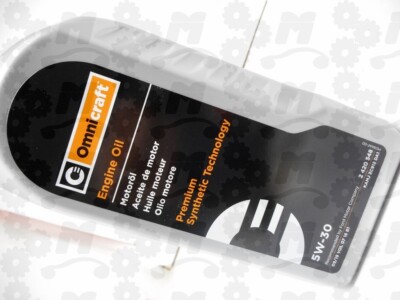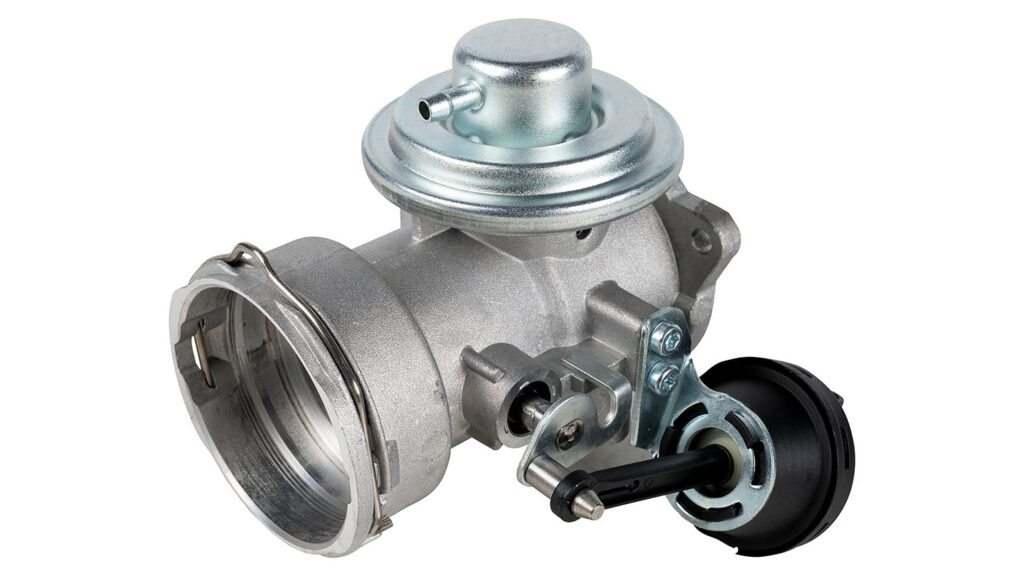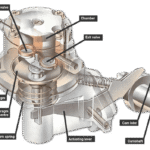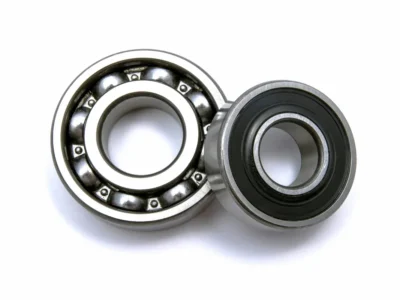
How to Clean and Maintain the Fiat Doblo’s EGR Valve

The Exhaust Gas Recirculation (EGR) valve is a crucial component of the Fiat Doblo's engine, responsible for reducing emissions by recirculating exhaust gases. Over time, the EGR valve can become clogged with carbon deposits, leading to decreased performance and potentially causing damage to the engine. Regular cleaning and maintenance of the EGR valve are essential to ensure the Fiat Doblo runs smoothly and efficiently. In this article, we will provide a step-by-step guide on how to clean and maintain the EGR valve, helping you to keep your vehicle in optimal condition and prevent costly repairs.
Cleaning and Maintenance Tips for the Fiat Doblo's EGR Valve
The Exhaust Gas Recirculation (EGR) valve is a crucial component in your Fiat Doblo's engine, responsible for reducing emissions by recirculating exhaust gases back into the engine's cylinders. To ensure the longevity and optimal performance of your vehicle, regular cleaning and maintenance of the EGR valve are essential. Here's a detailed guide on how to clean and maintain the Fiat Doblo's EGR valve.
Understanding the EGR Valve's Function
The EGR valve plays a vital role in minimizing the production of nitrogen oxides (NOx) by lowering the combustion temperature. It does this by redirecting a portion of the exhaust gases back into the engine's cylinders, where they are mixed with the air-fuel mixture. This process helps to reduce the amount of oxygen available for combustion, thereby decreasing the temperature and subsequently the formation of NOx. A properly functioning EGR valve is essential for maintaining the engine's performance and reducing emissions.
Step-by-Step Guide to Cleaning the EGR Valve
To clean the EGR valve, start by locating it on your Fiat Doblo's engine. Typically, it's connected to the intake manifold and the exhaust system. Remove the valve by disconnecting the electrical connector and the vacuum hose or pipe, then unscrew the mounting bolts. Soak the valve in a carbon cleaning solution to loosen any grime or carbon deposits. Use a soft-bristled brush to gently scrub away any stubborn deposits. Once clean, reassemble everything in reverse order, ensuring all connections are secure.
Maintenance Tips to Prevent EGR Valve Clogging
Regular maintenance is key to preventing the EGR valve from clogging. One effective method is to regularly check and clean the EGR valve, as well as to use a high-quality fuel that is less likely to leave behind residues. Additionally, ensuring that your Fiat Doblo's engine is properly tuned and running smoothly can help reduce the likelihood of EGR valve clogging.
| Maintenance Task | Frequency | Benefit |
|---|---|---|
| Clean EGR Valve | Every 30,000 miles | Prevents clogging and maintains engine performance |
| Check Engine Oil | Every 5,000 miles | Ensures engine longevity and reduces risk of EGR valve failure |
| Use High-Quality Fuel | Every fill-up | Reduces risk of carbon buildup in the EGR valve |
How do you maintain an EGR valve?

To maintain an EGR valve, it is essential to understand its function and the factors that affect its operation. The EGR valve is a critical component of a vehicle's emissions control system, responsible for recirculating a portion of the exhaust gases back into the engine's cylinders to reduce nitrogen oxide emissions. Regular maintenance of the EGR valve is crucial to ensure it operates correctly and does not cause any issues with the engine's performance.
Cleaning the EGR Valve
The EGR valve can become clogged with carbon deposits and other contaminants, which can cause it to malfunction. To clean the EGR valve, it is recommended to remove it from the engine and soak it in a cleaning solution. The following steps can be followed:
You may be interested in reading Preventing Fuel Pump Failures in Your Fiat Doblo
Preventing Fuel Pump Failures in Your Fiat Doblo- Remove the EGR valve from the engine and inspect it for any blockages or damage.
- Soak the EGR valve in a cleaning solution, such as a carburetor cleaner or a specialized EGR valve cleaning solution.
- Use a soft-bristled brush to gently scrub away any stubborn deposits or contaminants.
Inspecting the EGR Valve and its Components
Regular inspection of the EGR valve and its components is essential to identify any potential issues before they become major problems. The following components should be inspected:
- The EGR valve itself, looking for any signs of wear, damage, or corrosion.
- The EGR valve's electrical connections, ensuring they are clean and secure.
- The vacuum hoses and pipes connected to the EGR valve, checking for any signs of damage or leaks.
Replacing the EGR Valve when Necessary
In some cases, the EGR valve may need to be replaced, either due to wear and tear or because it has become faulty. When replacing the EGR valve, it is essential to ensure the new valve is compatible with the vehicle's make and model. The following considerations should be taken into account:
- Purchase a replacement EGR valve from a reputable supplier or the vehicle's manufacturer.
- Follow the manufacturer's instructions for installing the new EGR valve.
- Test the new EGR valve to ensure it is operating correctly and not causing any issues with the engine's performance.
How do you clean EGR maintenance?

To clean EGR maintenance, you need to follow a series of steps that ensure the Exhaust Gas Recirculation system is properly maintained. The EGR system is crucial for reducing emissions by recirculating a portion of the exhaust gas back into the engine's cylinders. Over time, the EGR valve and cooler can become clogged with soot and debris, leading to decreased engine performance and increased emissions.
Preparation for EGR Cleaning
Before starting the cleaning process, it's essential to prepare the necessary tools and materials. This includes a socket set, a cleaning solution specifically designed for EGR systems, and protective gloves. Ensure the engine is cool before beginning the process to avoid any accidental burns or injuries.
- Gather the required tools and materials.
- Consult the vehicle's repair manual for specific instructions on locating the EGR valve and cooler.
- Ensure the workspace is well-ventilated to prevent inhalation of any cleaning fumes.
Step-by-Step EGR Cleaning Process
The actual cleaning process involves removing the EGR valve and cooler, inspecting them for any damage, and then cleaning or replacing them as necessary. Use a cleaning solution to dissolve any soot or debris, and a soft brush to gently scrub away any stubborn buildup.
- Remove the EGR valve and cooler according to the manufacturer's instructions.
- Inspect the removed components for any signs of damage or excessive wear.
- Soak the components in a cleaning solution to loosen any debris.
Reinstallation and Testing
After cleaning, it's crucial to properly reinstall the EGR valve and cooler, ensuring all connections are secure and not leaking. Start the engine and check for any signs of leaks or malfunction. It's also a good idea to take the vehicle for a test drive to ensure the EGR system is functioning correctly.
- Reinstall the EGR valve and cooler in the reverse order of their removal.
- Tighten all connections securely to prevent leaks.
- Monitor the vehicle's performance and check for any error codes on the dashboard.
Can I clean my EGR valve without taking it off?

 Preventing Fuel Pump Failures in Your Fiat Doblo
Preventing Fuel Pump Failures in Your Fiat Doblo Fiat Doblo Engine Oil Guide: Complete Reference for Every Variant
Fiat Doblo Engine Oil Guide: Complete Reference for Every VariantThe Exhaust Gas Recirculation (EGR) valve is a critical component in a vehicle's engine management system, responsible for reducing nitrogen oxide emissions by recirculating a portion of the exhaust gas back into the engine cylinders. Over time, the EGR valve can become clogged with carbon deposits, leading to issues such as decreased engine performance, increased emissions, and potentially causing the engine to run rough or stall. Cleaning the EGR valve is a maintenance task that can help restore its function.
Understanding EGR Valve Clogging
The EGR valve can become clogged due to the accumulation of carbon deposits and other contaminants. This clogging can lead to a variety of problems, including reduced engine efficiency and increased emissions. To address this issue, cleaning the EGR valve is often recommended. The feasibility of cleaning the valve without removing it depends on the extent of the clogging and the design of the EGR system in the vehicle.
Some key points to consider when assessing the clogging include:
- The level of carbon buildup within the valve and associated piping.
- The accessibility of the EGR valve and its components.
- The type of cleaning method or product to be used.
Methods for Cleaning the EGR Valve In-Situ
There are several methods that can be employed to clean the EGR valve without removing it from the vehicle. One common approach involves using a specialized cleaning product that is designed to dissolve and remove carbon deposits. These products can be introduced into the EGR system through the valve or other access points. Another method involves using the vehicle's own engine operation to help clean the valve, by running the engine under specific conditions to generate higher temperatures and flows that can help burn off deposits.
Key steps for in-situ cleaning include:
- Selecting the appropriate cleaning product or method for the specific EGR system.
- Following the manufacturer's instructions for the cleaning product or procedure.
- Monitoring the engine's performance during and after the cleaning process.
Considerations for Effective EGR Valve Cleaning
For effective cleaning of the EGR valve without removal, it is crucial to ensure that the chosen cleaning method is compatible with the valve's design and the vehicle's engine management system. Additionally, the extent of the clogging will influence the effectiveness of the cleaning. In cases where the clogging is severe, removal of the valve for a more thorough cleaning or even replacement may be necessary.
Some factors to consider for effective cleaning include:
- The compatibility of the cleaning method with the EGR valve and engine type.
- The severity of the clogging and whether in-situ cleaning is sufficient.
- The need for any additional maintenance or repairs following the cleaning.
Frequently Asked Questions
What is the purpose of the EGR valve in a Fiat Doblo?
The EGR valve in a Fiat Doblo reduces nitrogen oxide emissions by recirculating a portion of the exhaust gas back into the engine's cylinders. This process helps lower the combustion temperature, resulting in decreased emissions. A properly functioning EGR valve is crucial for maintaining the vehicle's environmental performance and overall engine efficiency.
How often should I clean the EGR valve in my Fiat Doblo?
The frequency of cleaning the EGR valve depends on the vehicle's mileage and operating conditions. As a general rule, it's recommended to clean the EGR valve every 30,000 to 50,000 miles. However, if you notice symptoms like decreased engine performance or increased emissions, you may need to clean it more frequently.
What are the signs that the EGR valve needs cleaning?
Signs that the EGR valve needs cleaning include decreased engine performance, rough idling, and increased emissions. You may also notice a decrease in fuel efficiency or a fault light on the dashboard indicating an issue with the EGR system. If you experience any of these symptoms, inspect and clean the EGR valve to restore optimal engine performance.
Can I clean the EGR valve myself or should I consult a mechanic?
You can clean the EGR valve yourself if you have the necessary technical knowledge and tools. However, if you're not familiar with the process or feel uncomfortable working with engine components, it's recommended to consult a professional mechanic. They can assess the EGR valve's condition and perform the cleaning or replacement if necessary, ensuring the job is done correctly and safely.
You may be interested in reading Preventing Fuel Pump Failures in Your Fiat Doblo
Preventing Fuel Pump Failures in Your Fiat Doblo Fiat Doblo Engine Oil Guide: Complete Reference for Every Variant
Fiat Doblo Engine Oil Guide: Complete Reference for Every Variant How to Fix Knocking Noises from Fiat Doblo Wheels
How to Fix Knocking Noises from Fiat Doblo Wheels
If you want to know other articles similar to How to Clean and Maintain the Fiat Doblo’s EGR Valve you can visit the category Fiat Doblo.
Deja una respuesta






More content of your interest